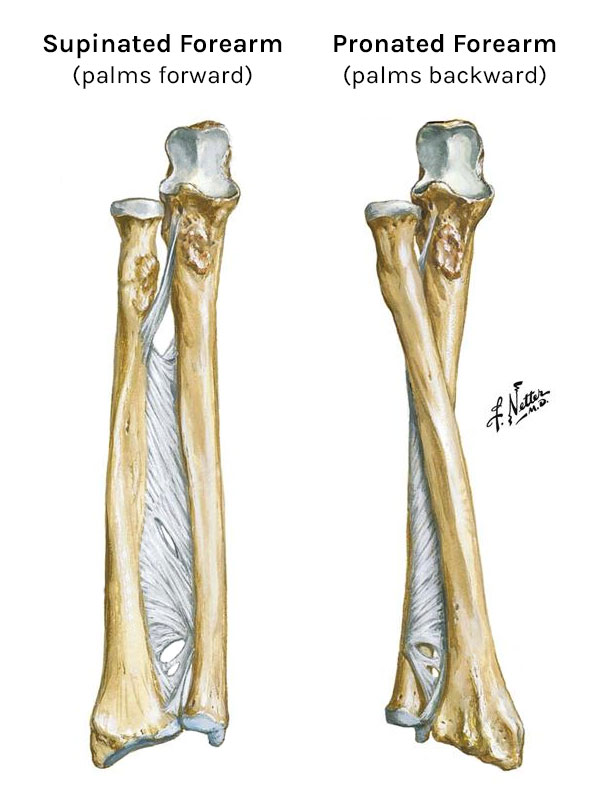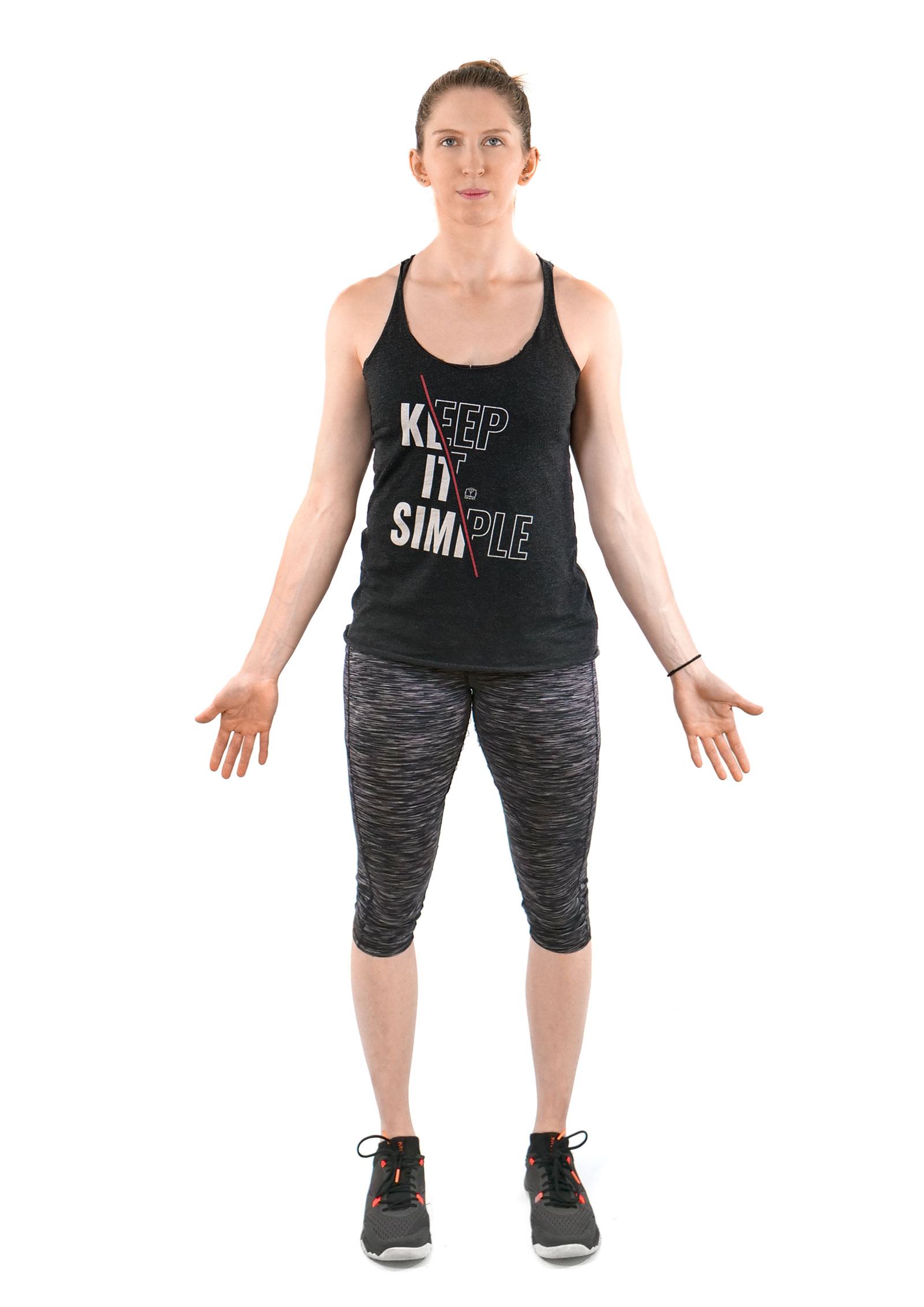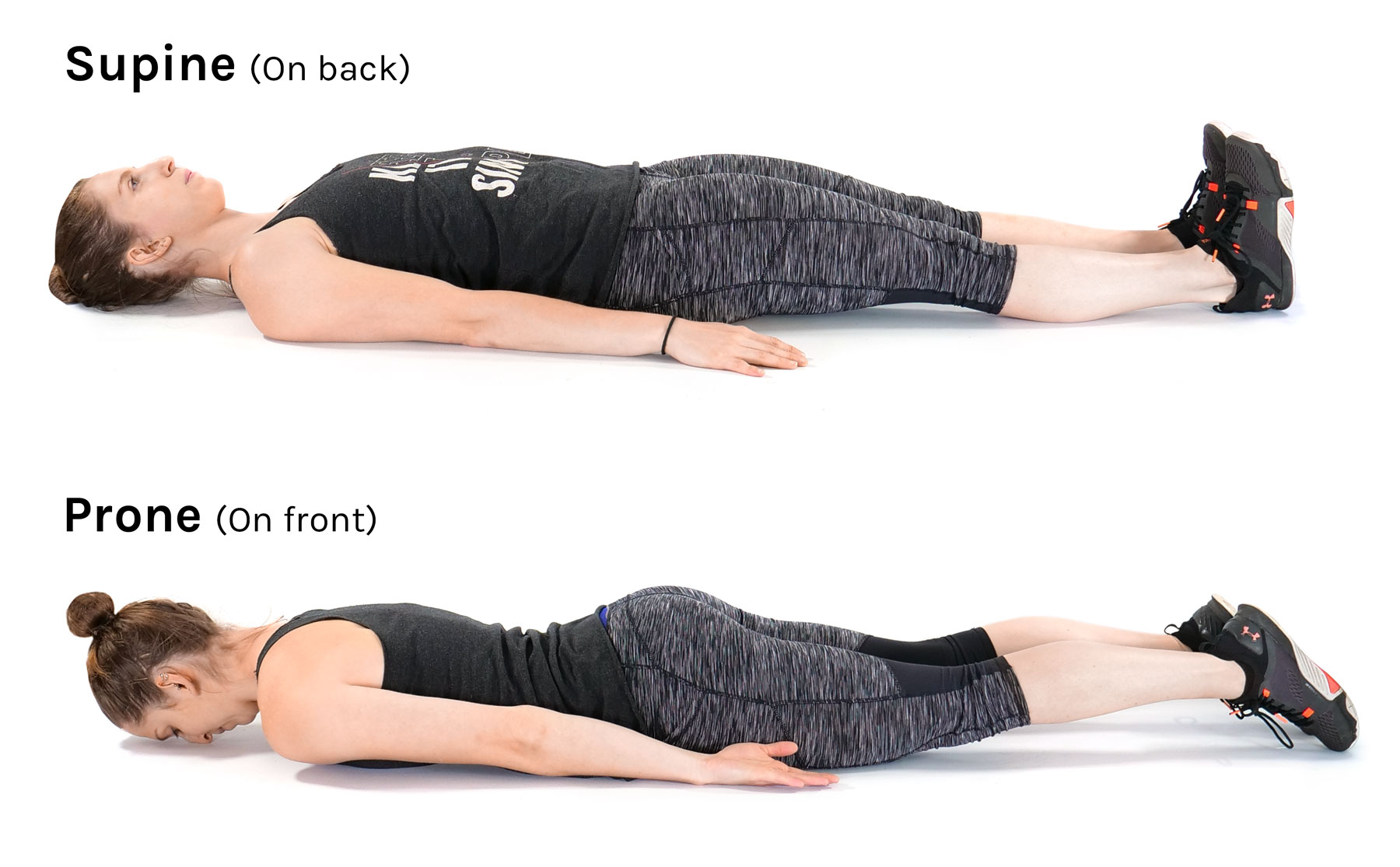The Anatomical Position
The standard Anatomical Position for humans is stood straight up, arms straight out slightly away from torso, palms facing forwards (supinated), feet apart with toes forward or slightly pointed outwards.
As recognisable as this is, it might be something you’ve never really thought about before – why are humans always drawn in this rigid way?!
When you’re trying to describe anatomy, it can be really frustrating that humans tend to move. Trying to describe something like “the front” or “the top” can vary wildly depending on whether someone’s stood up, bent over, lying down on their stomach, etc. so a standard had to be set.
Anytime something – a muscle/bone/organ/limb’s movement/position/function etc – is being anatomically described, it’s imagined that it’s sitting in the Anatomically Positioned body. This way, everyone agrees what is the front (anterior), the back (posterior), and everything in between!
The rest of the blogs in our Anatomical Series will use this Anatomical Position as a reference.
Fun fact, it may seem slightly odd that the palms are facing forwards, rather than a more natural thumb-forwards position, but there’s actually a pretty good reason for it. You have two bones in your forearm: your Ulna and your Radius. As you turn your thumb from the outside of your body to the inside (pronation), the Radius crosses over your Ulna:

Keeping the palm facing forwards (supinated) in the Anatomical Position keeps your two forearm bones parallel! Crazy!
Prone & Supine
Two other common positions are Prone & Supine. Even though they aren’t the standard reference for anatomical description, they are still useful to know.
Prone: Lying on your front
A little trick to help you remember is that when you’re supine, you’re lying on your spine – get it?!
Prone does pop up in life a bit, such as when a baby is learning to crawl on their belly (prone crawling) or in the military (a prone position is very stable for shooting).
Remembering the Anatomical Position will be handy for learning things like Anatomical Directions or Movements.
READY TO GET STARTED?
View Products


